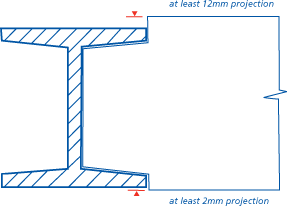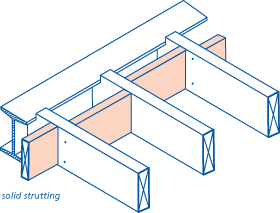So after looking at the steel beam my SE as specified, I have noticed the depth between the flanges on steel beam is smaller than the actual joists on the 1st floor.
The joists are 175mm and the beam which was specified is 178mm however the beam only as 146mm between the flanges so you can't sit the joists in between them
I asked the SE to have it recessed in the ceiling so it's near flush. The SE specified using joist hangers but not actually said which to use. Is this a common thing having a beams flange depth smaller than the joists? I've tried searching but pretty much everything I've seen so far shows steel beams with the same depth as the joists whether on joists hangers or sat on the flange. I think I seen one where the joists were notched but I thought that was a bad idea seeing as we're talking over 30mm
The steel beam is 2m with a span of 1.8m and will be supporting the inner leaf and external leaf on it. There is a 2.6m flat roof extension where the joists run parallel to 1st floor joists which the steel beam will also be supporting
The joists are 175mm and the beam which was specified is 178mm however the beam only as 146mm between the flanges so you can't sit the joists in between them
I asked the SE to have it recessed in the ceiling so it's near flush. The SE specified using joist hangers but not actually said which to use. Is this a common thing having a beams flange depth smaller than the joists? I've tried searching but pretty much everything I've seen so far shows steel beams with the same depth as the joists whether on joists hangers or sat on the flange. I think I seen one where the joists were notched but I thought that was a bad idea seeing as we're talking over 30mm
The steel beam is 2m with a span of 1.8m and will be supporting the inner leaf and external leaf on it. There is a 2.6m flat roof extension where the joists run parallel to 1st floor joists which the steel beam will also be supporting




